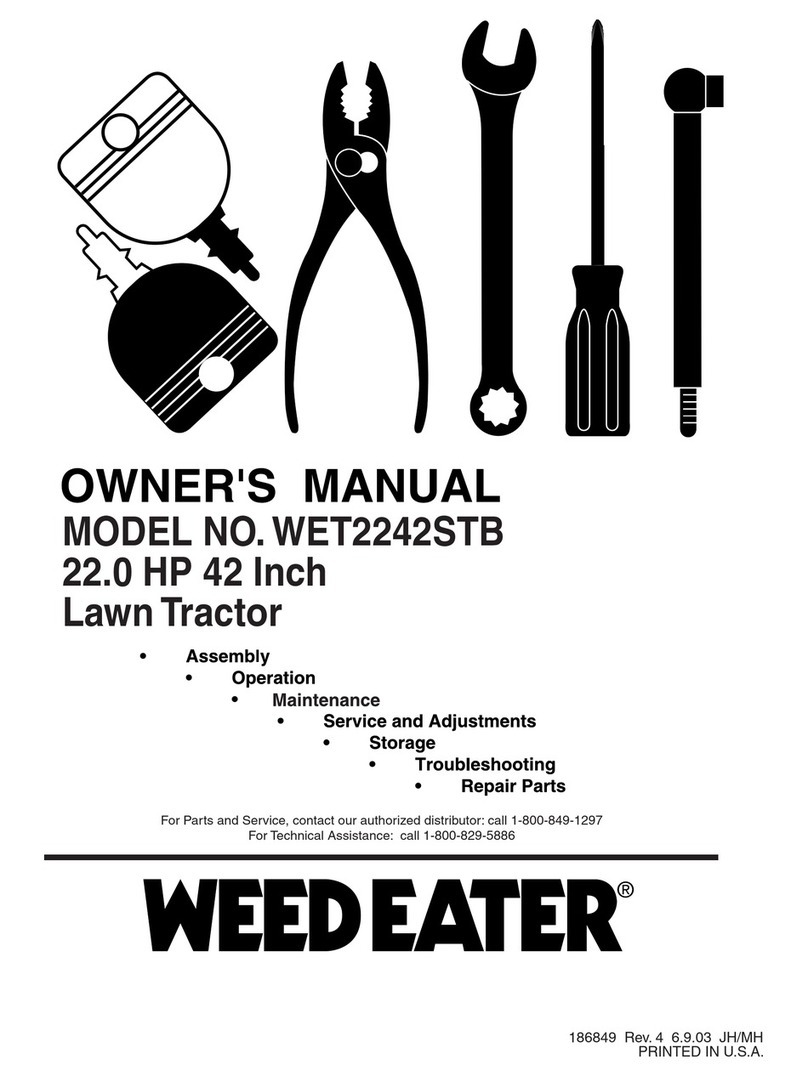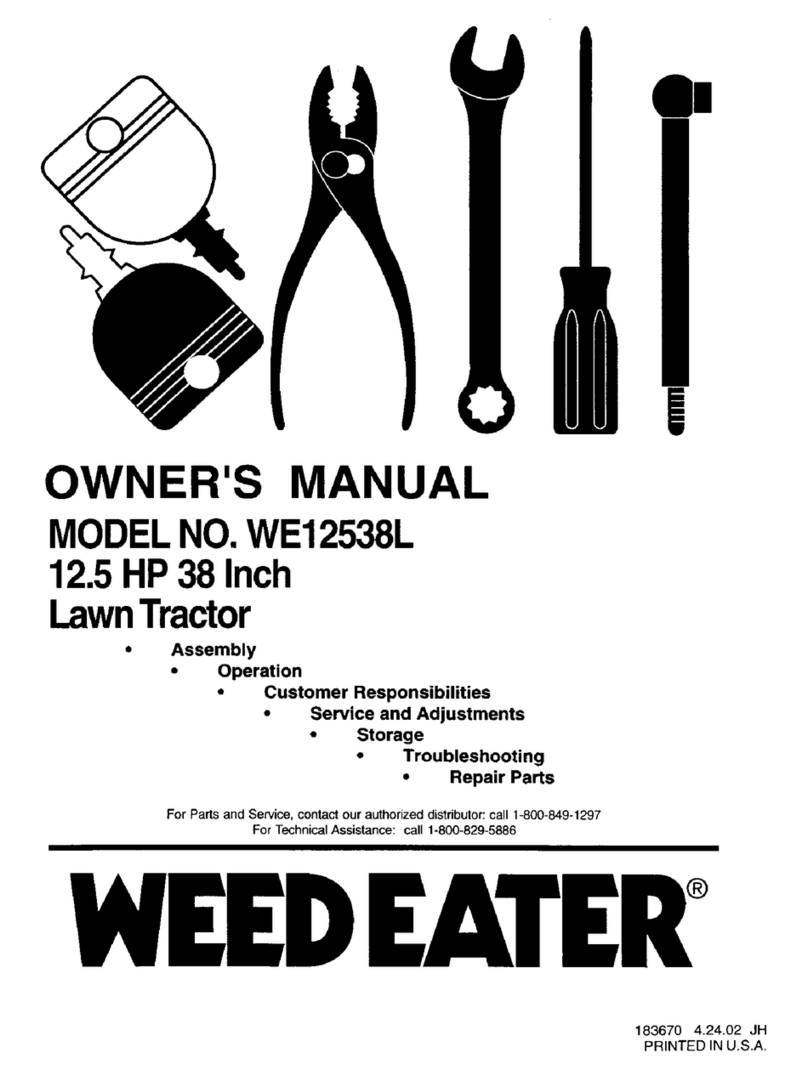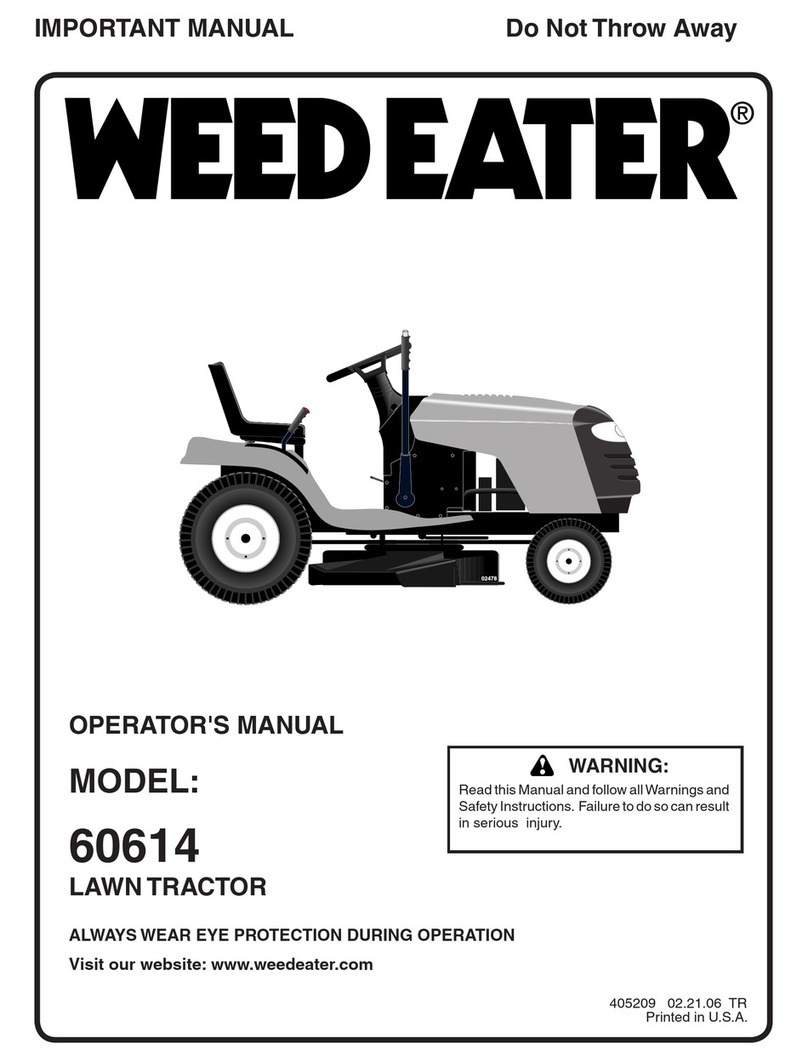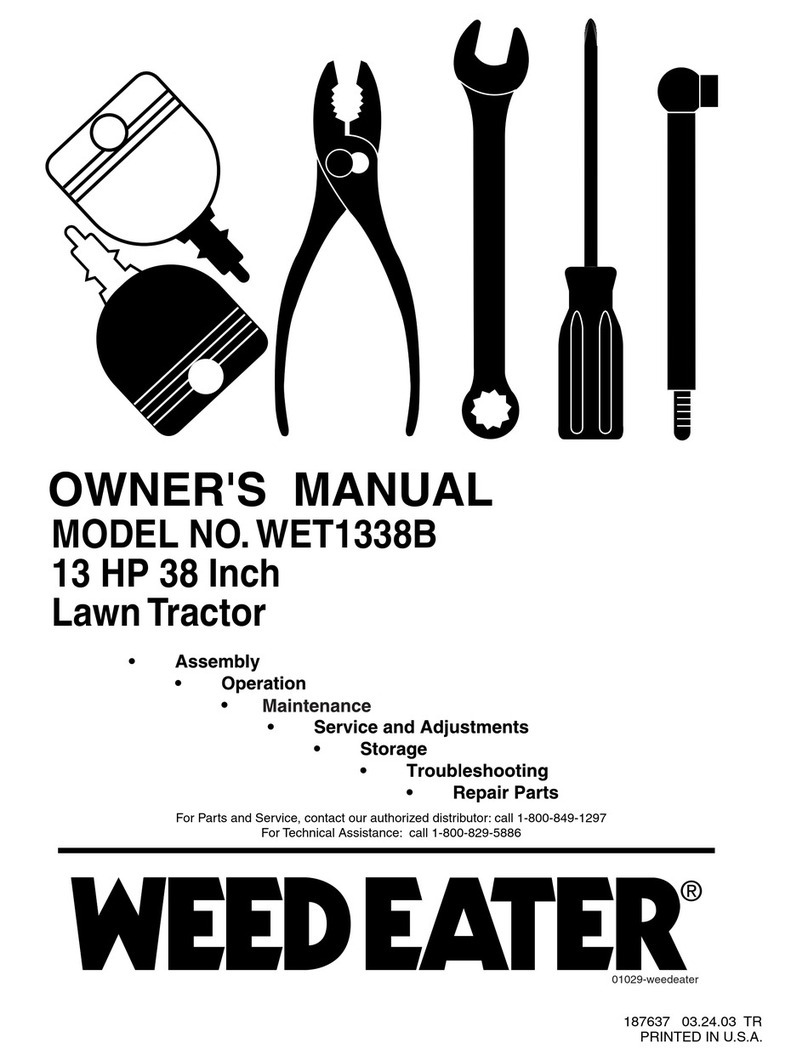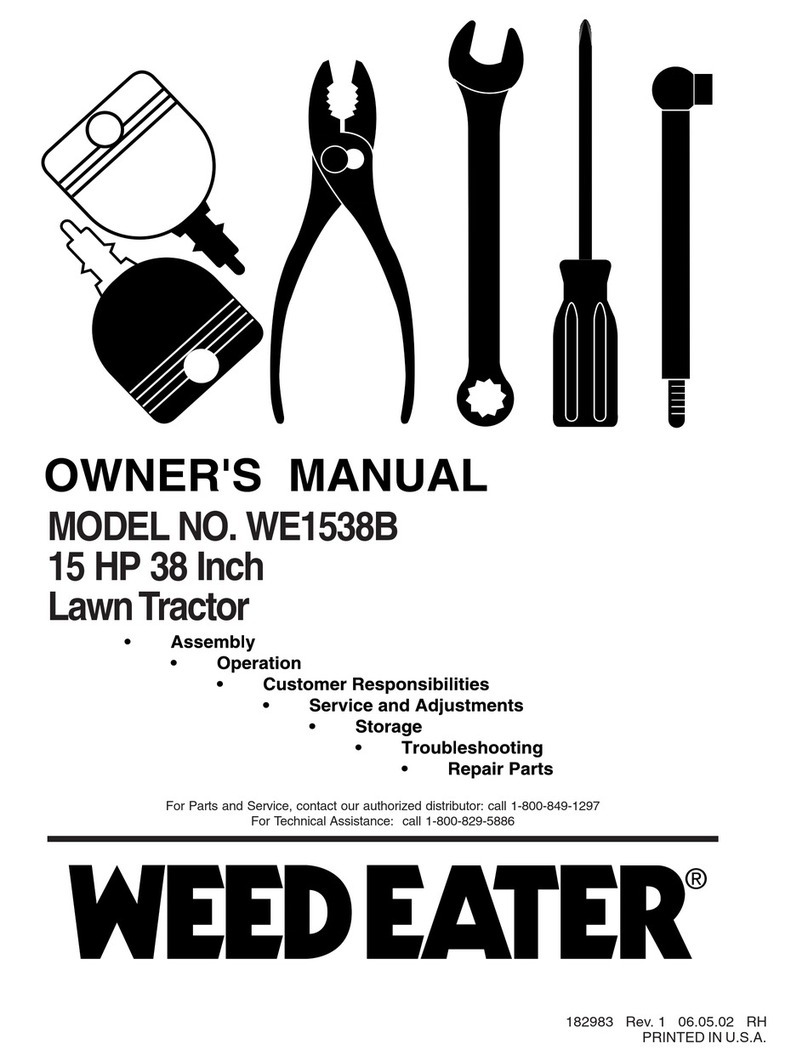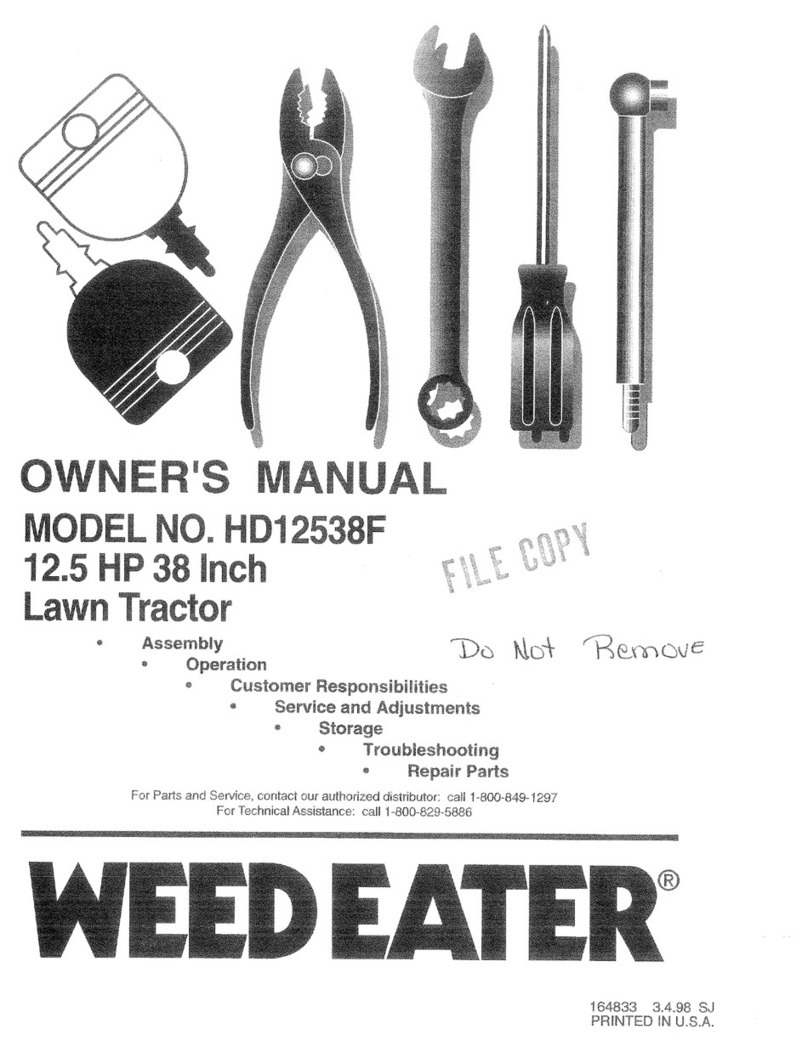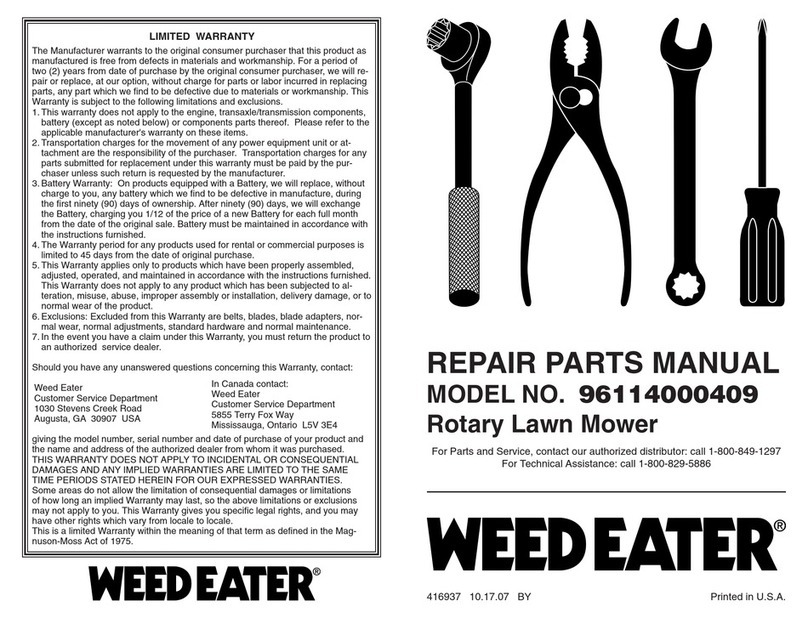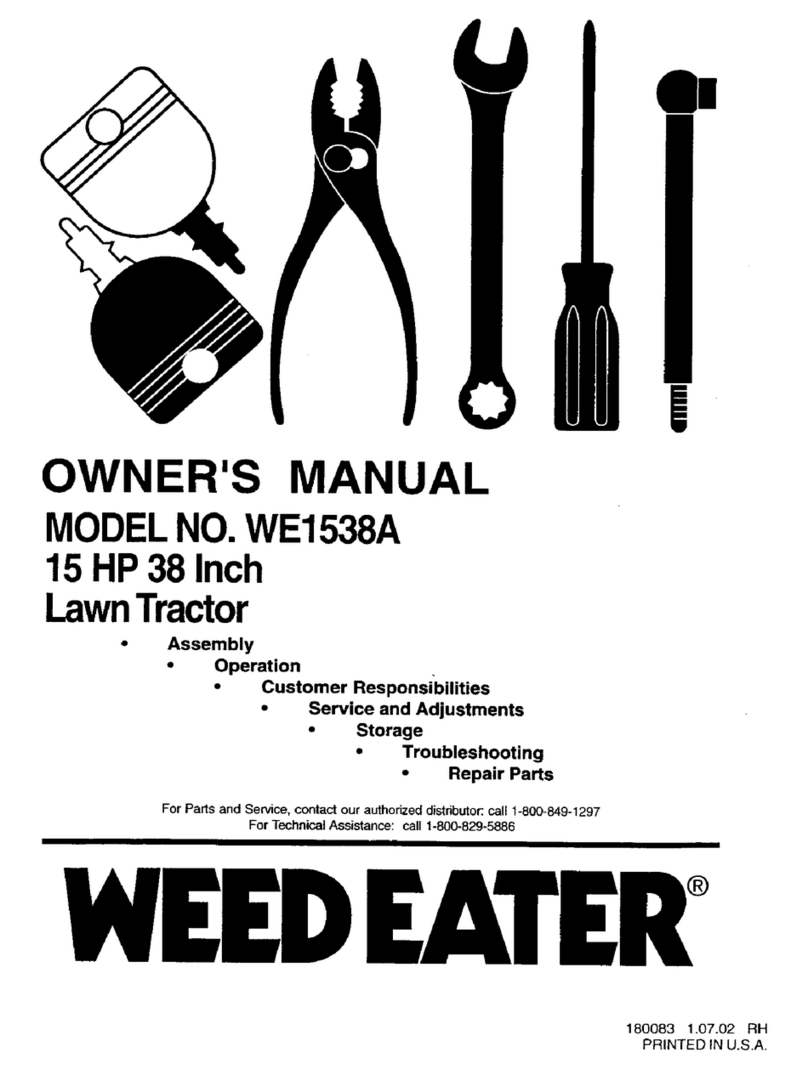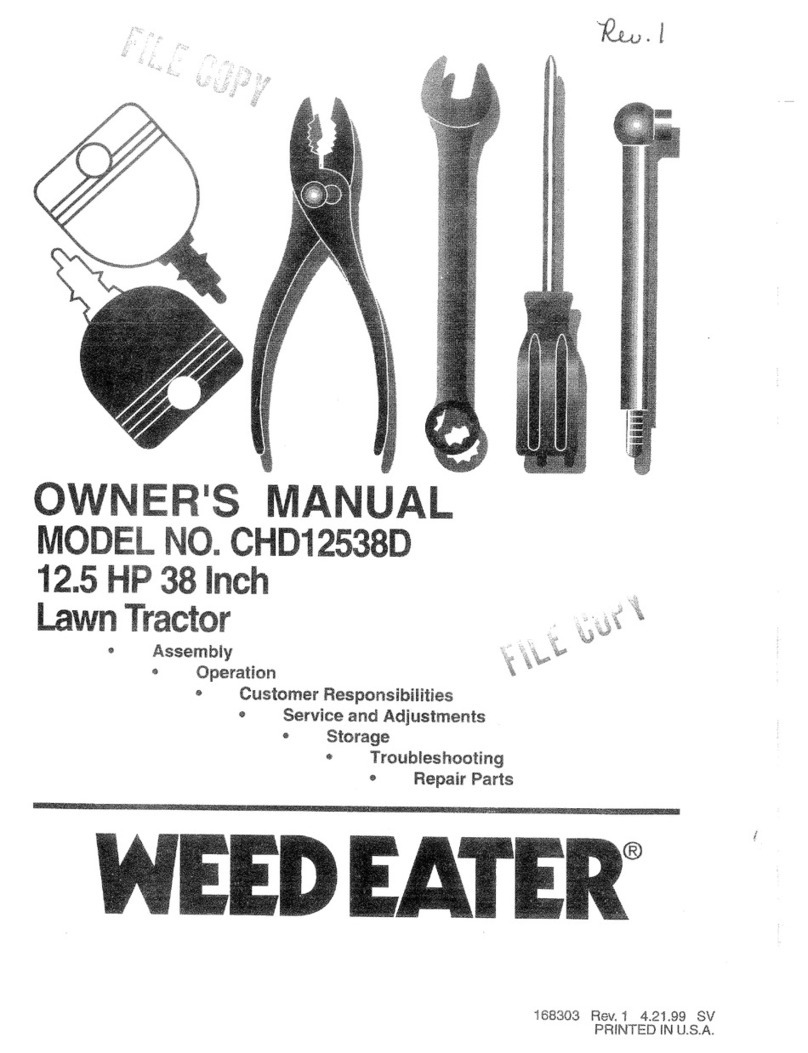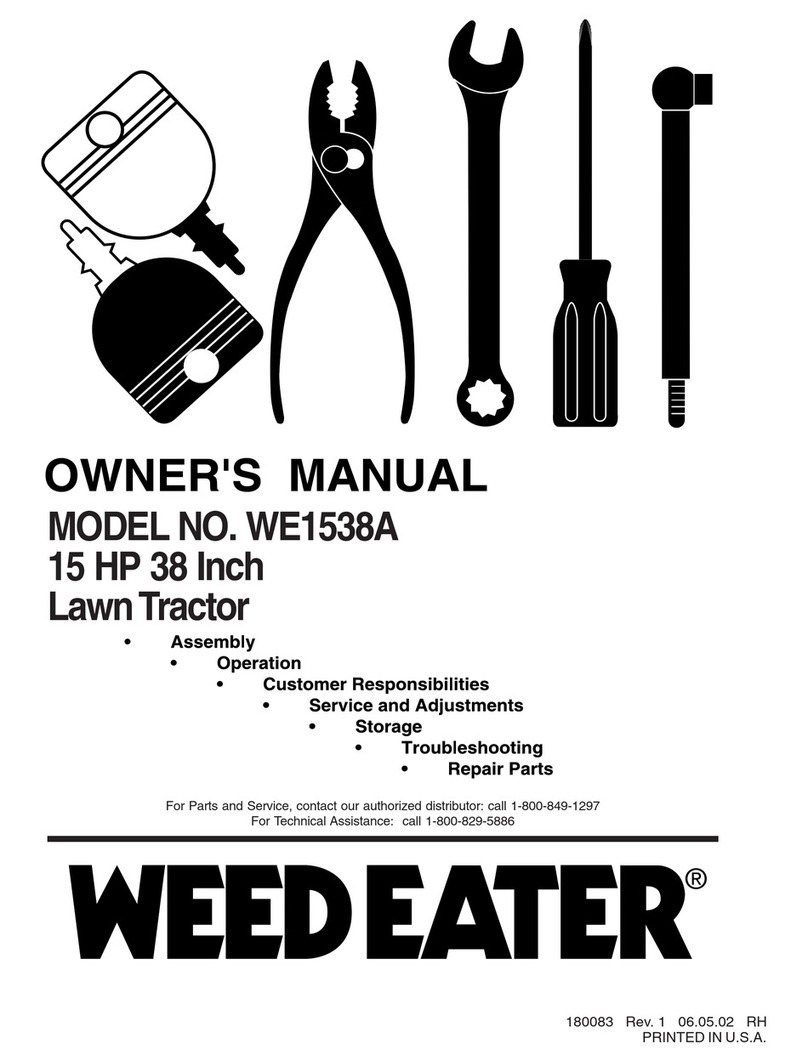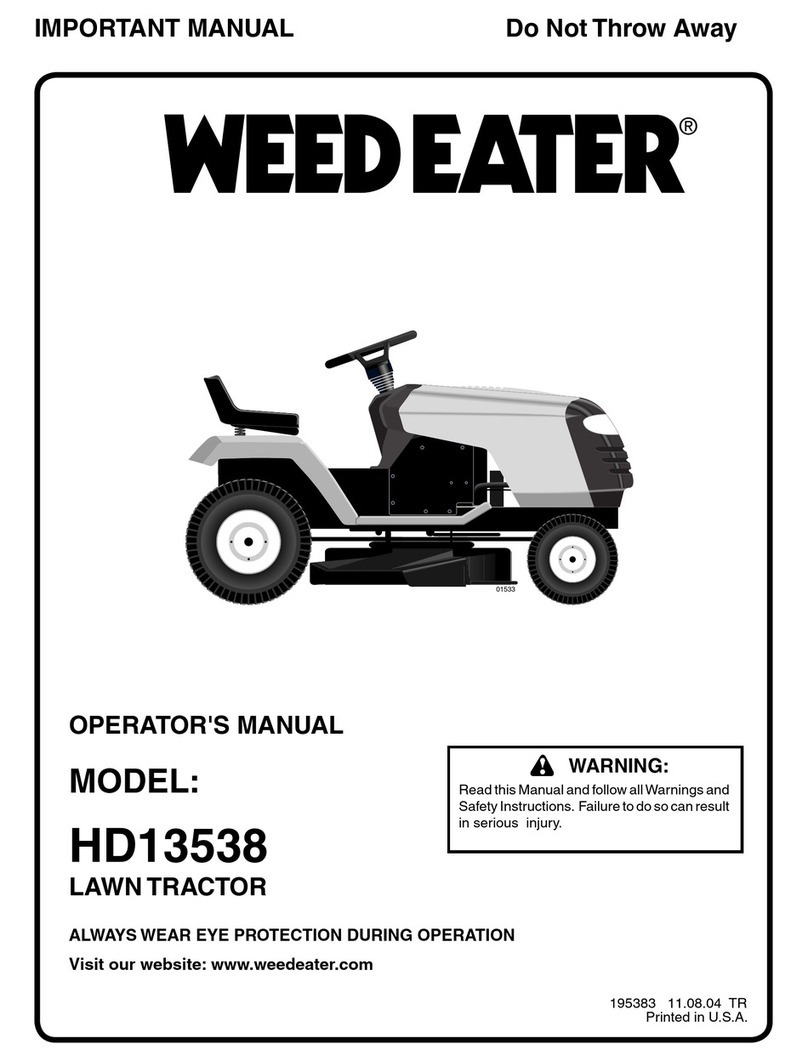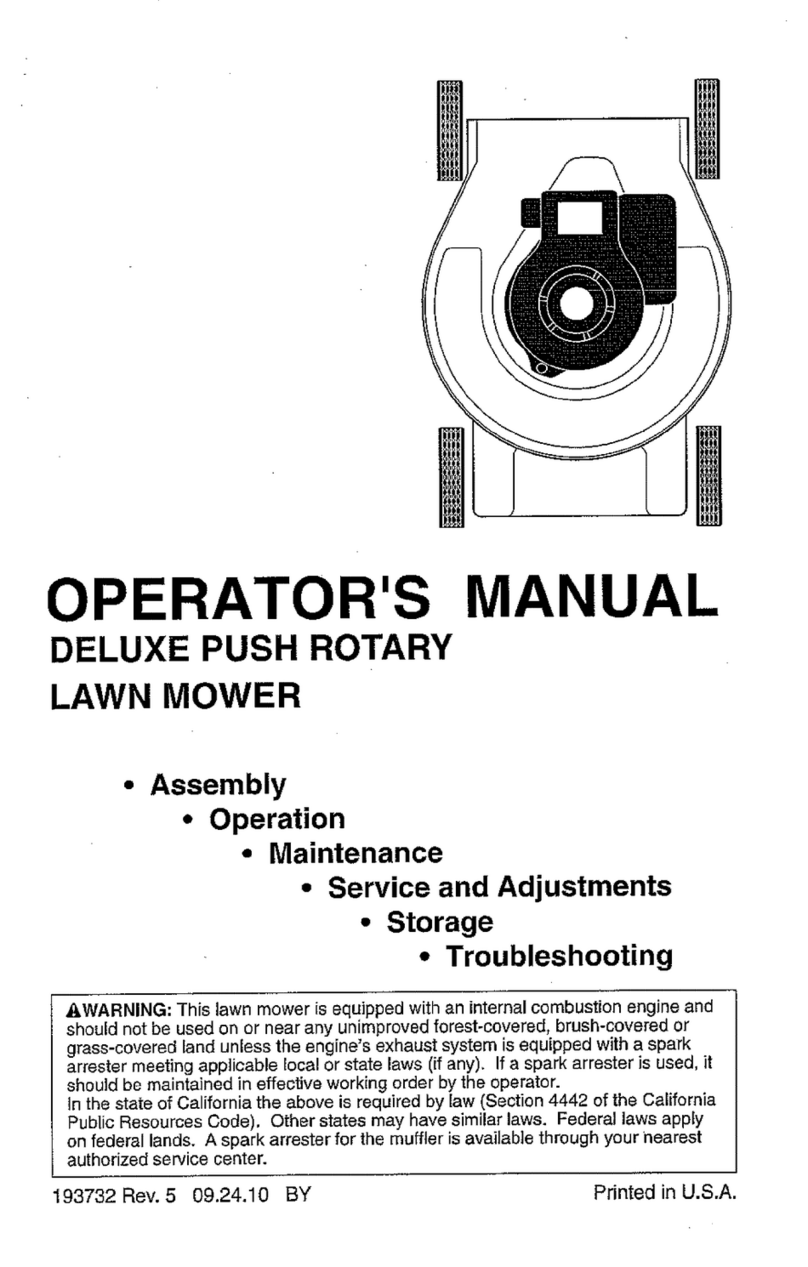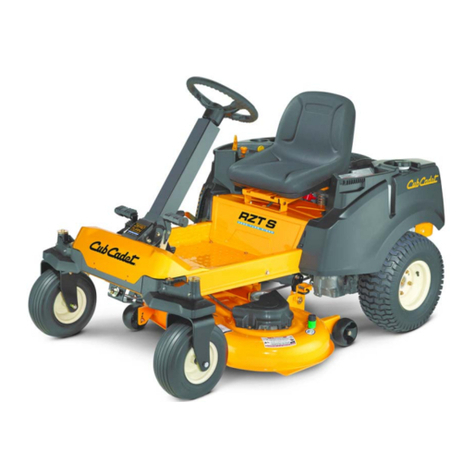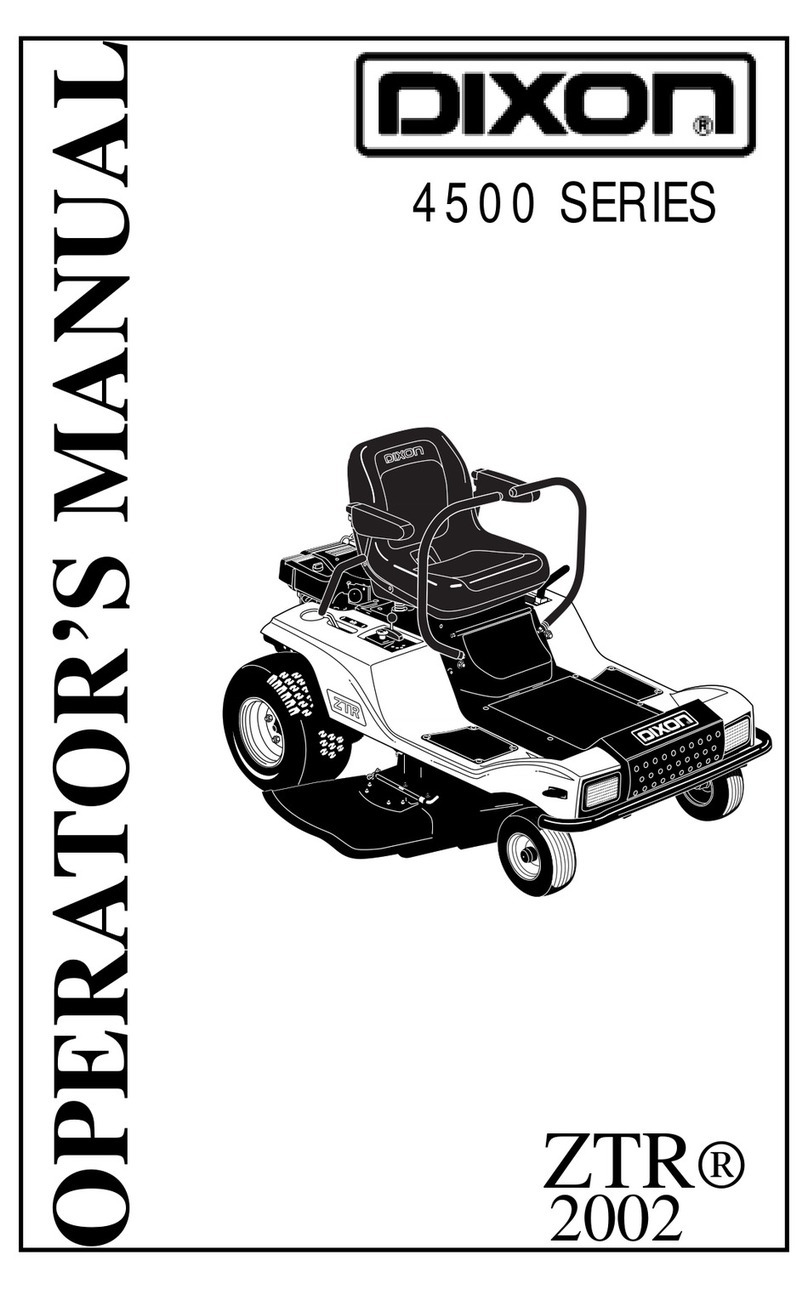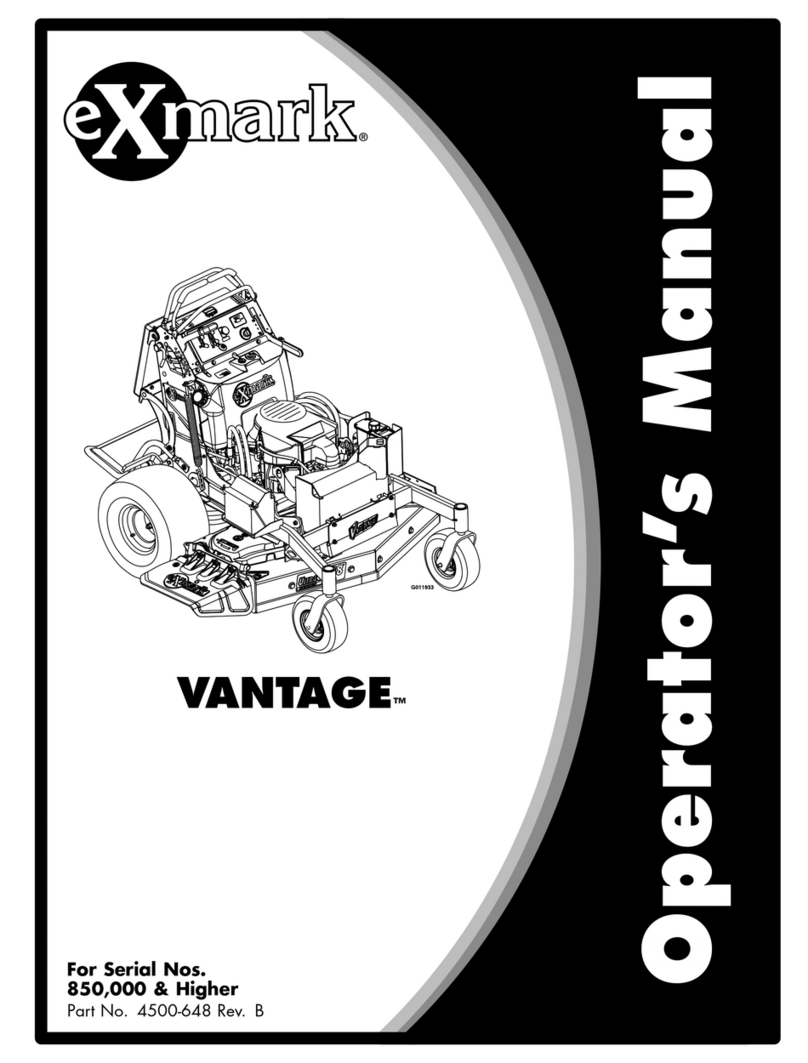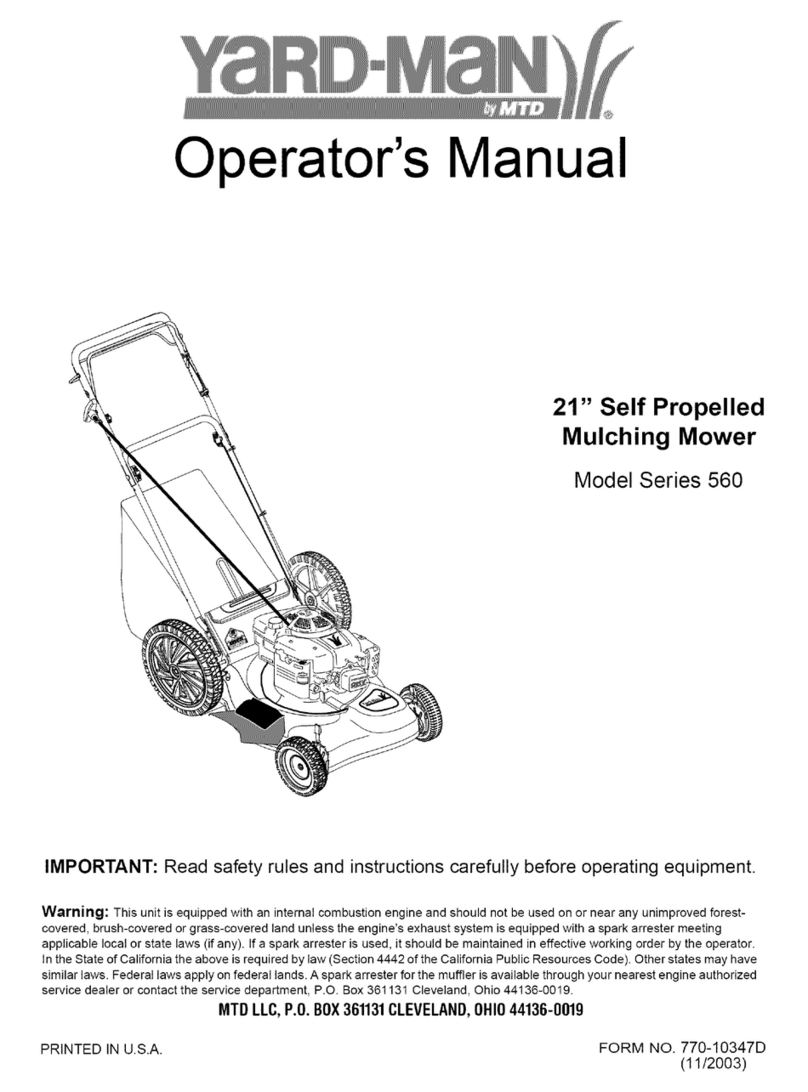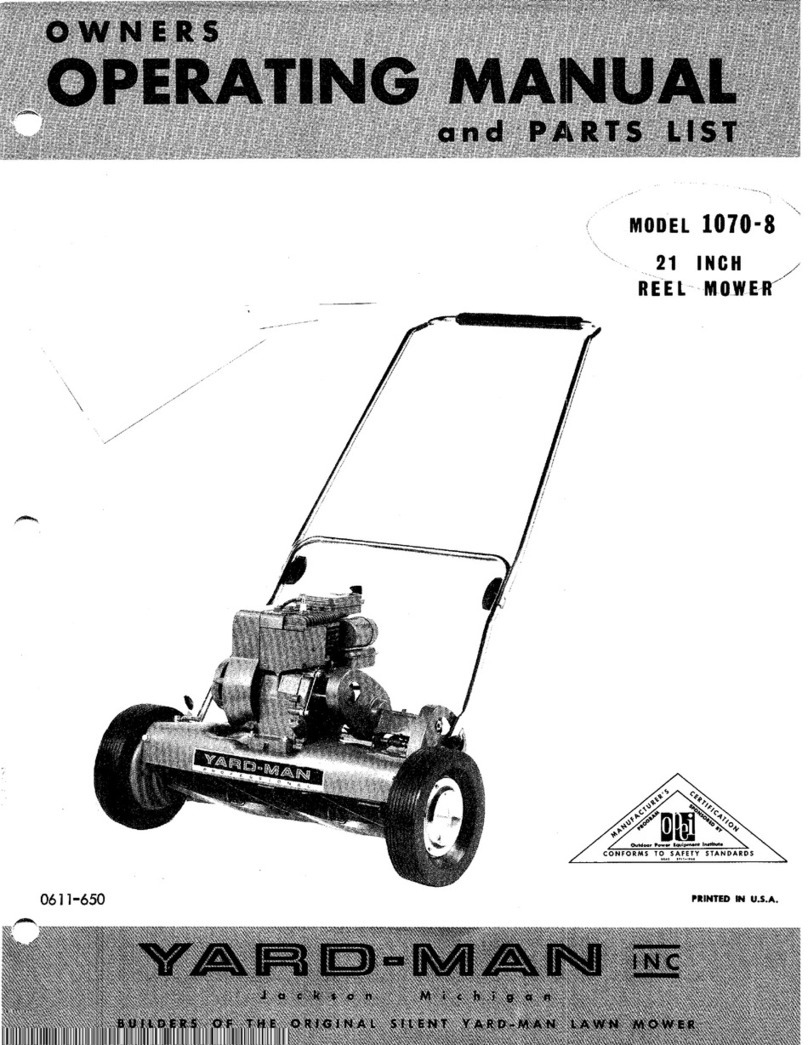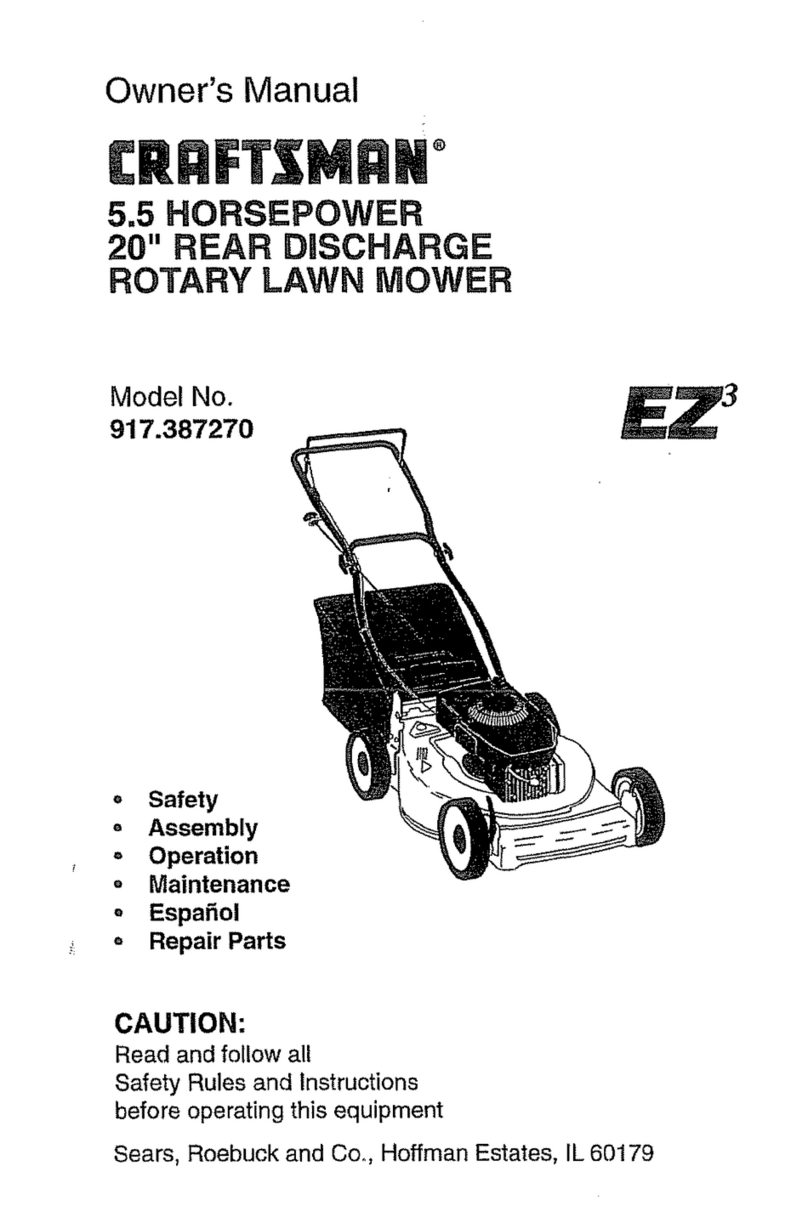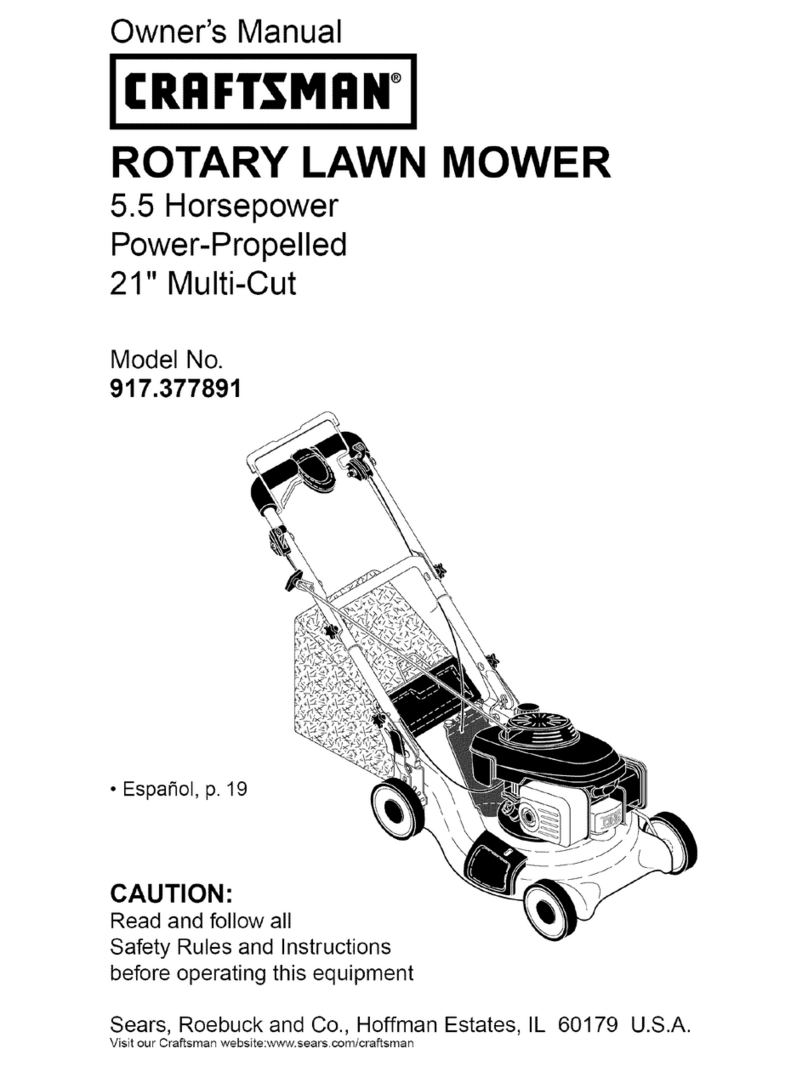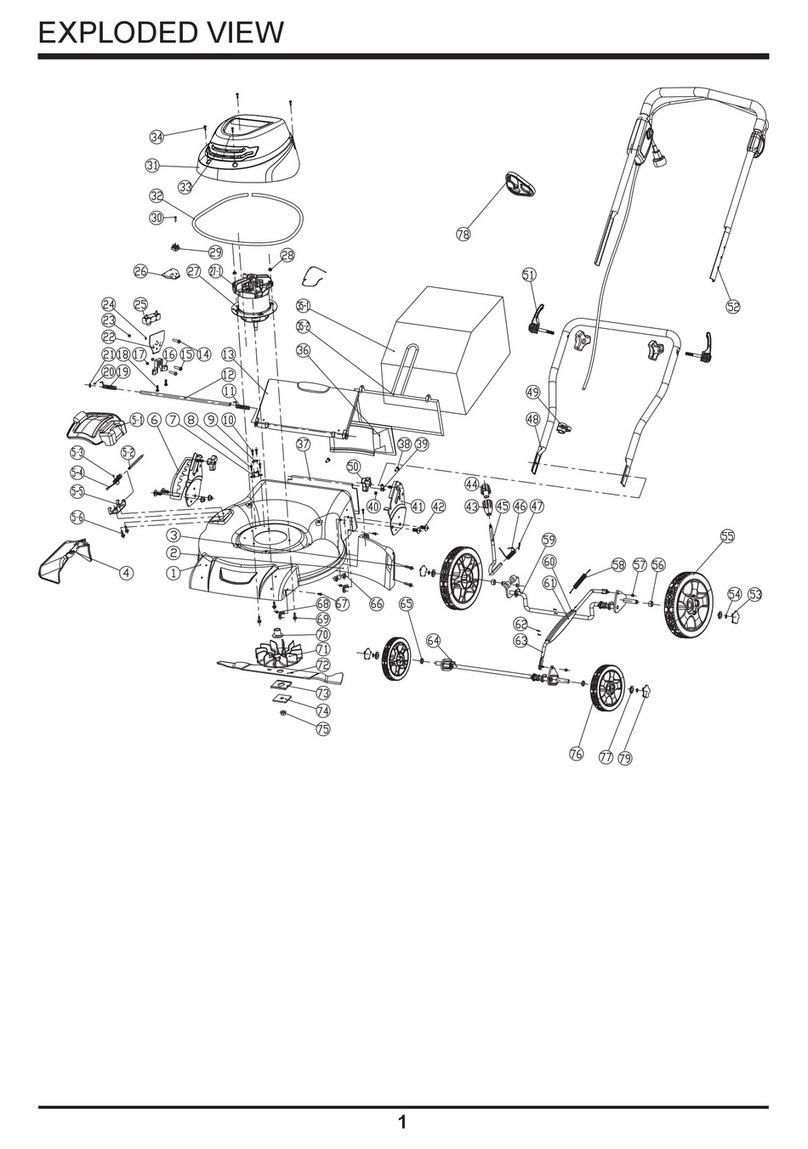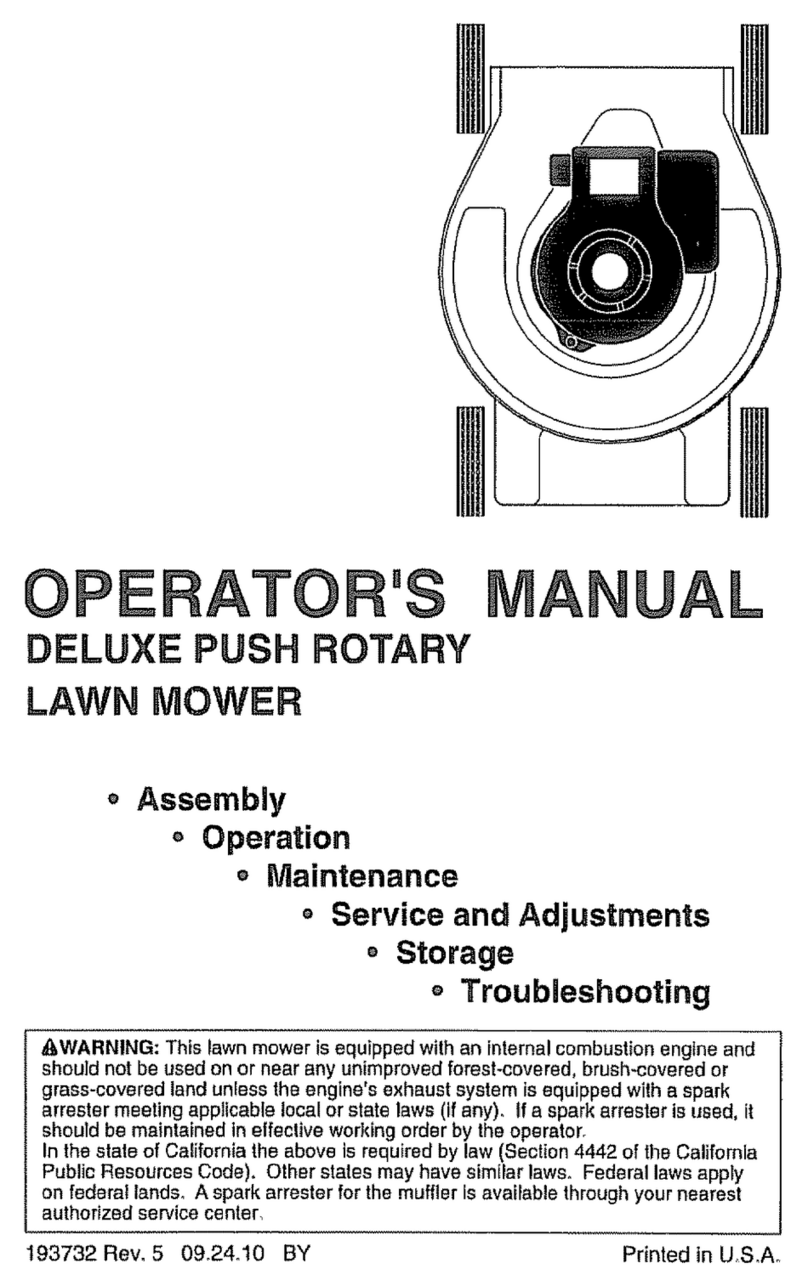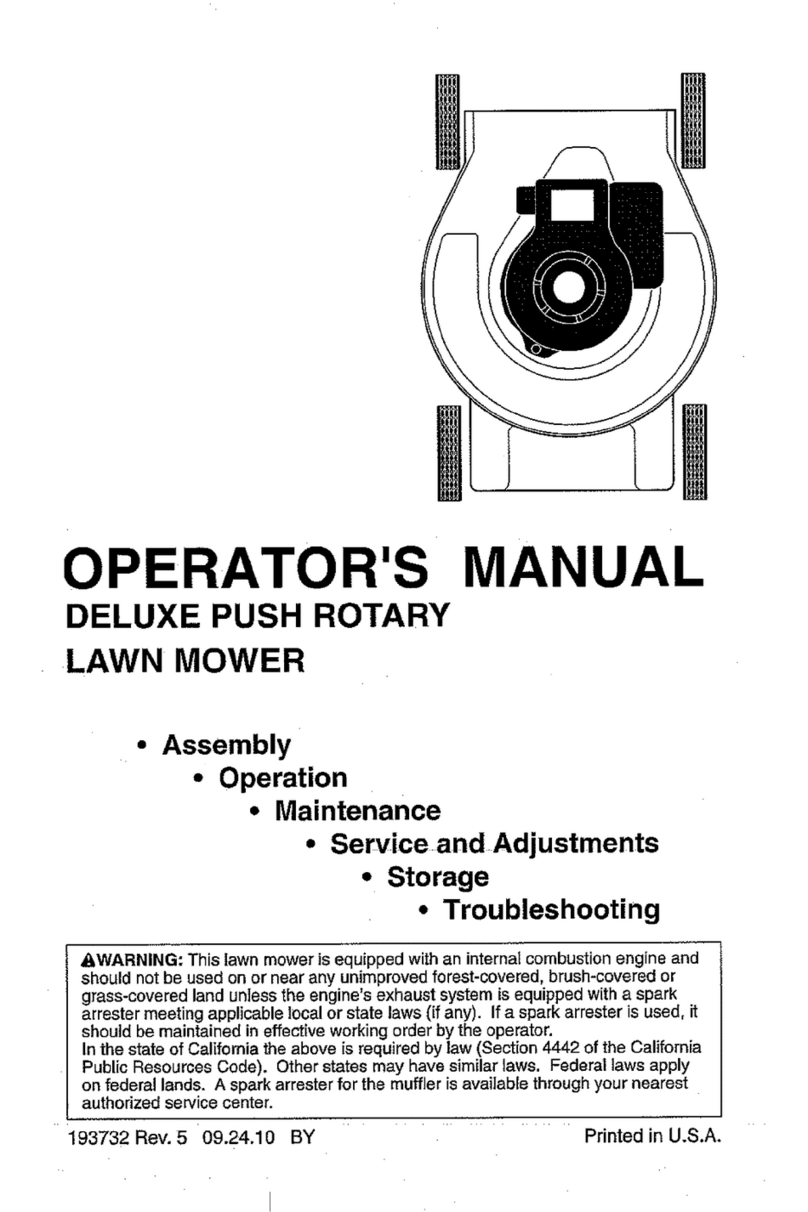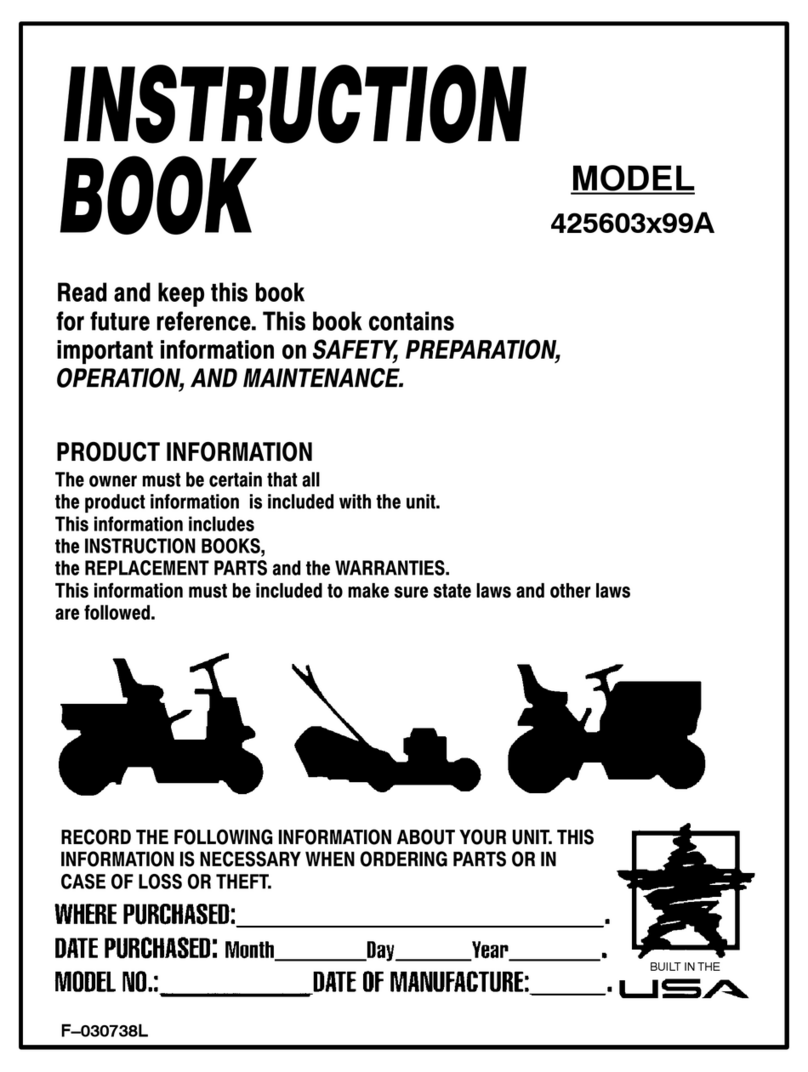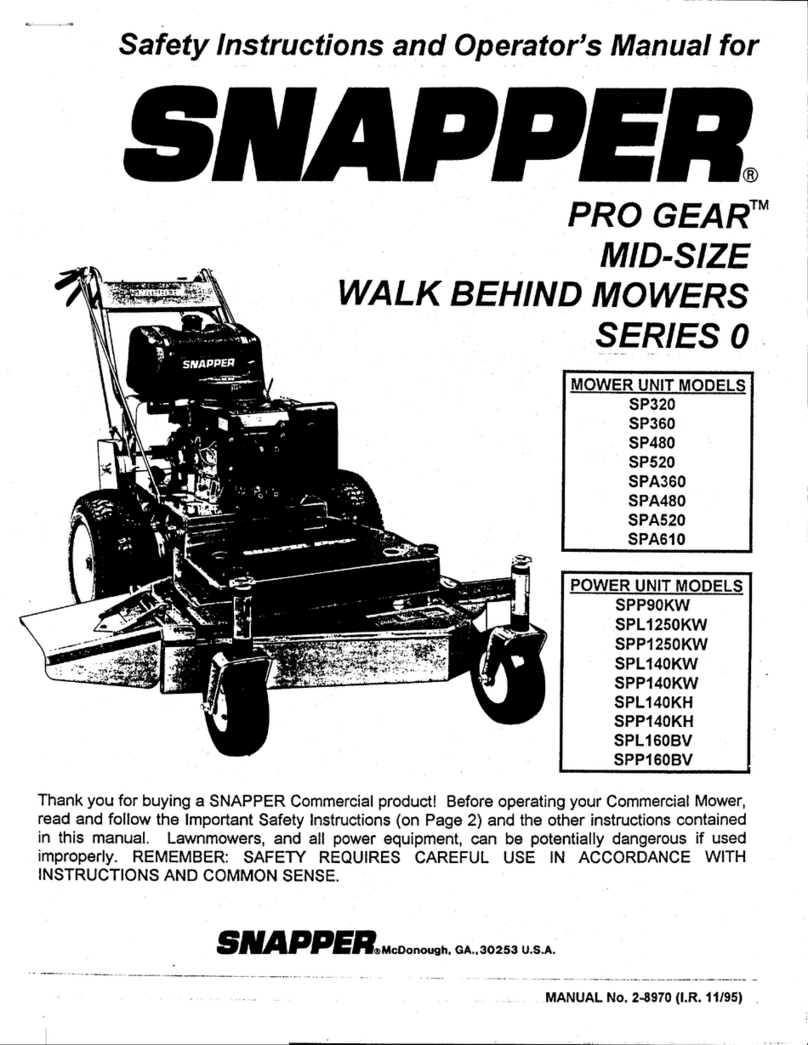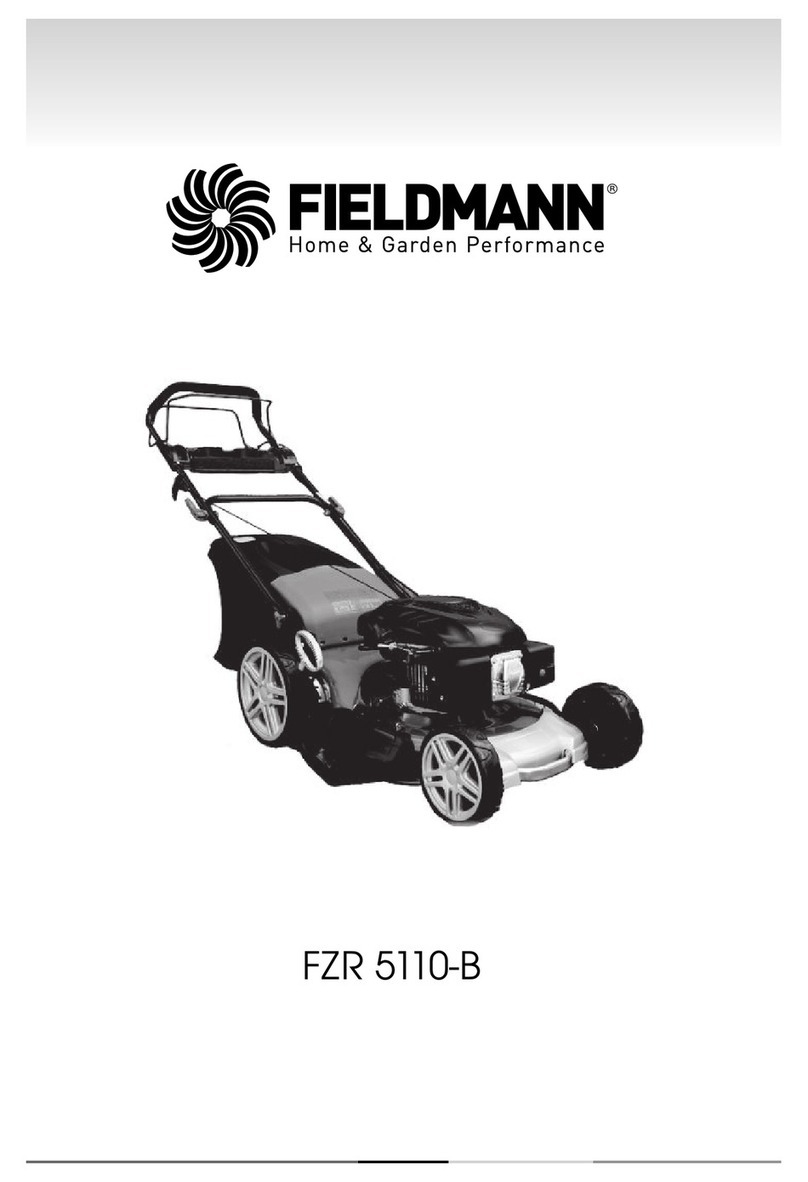SAFETY RULES
_I, SAFE OPERATION PRACTICES FOR RIDE-ON MOWERS ,_
IMPORTANT: THIS CUTTING MACHINE IS CAPABLE OF AMPUTATING HANDS AND FEET AND THROWING OBJECTS.
FAILURE TO OBSERVE THE FOLLOWING SAFETY INSTRUCTIONS COULD RESULT IN SERIOUS INJURY OR DEATH.
I. GENERAL OPERATION
Read, understand, and follow all instructions in themanuar
and on the machine before starting.
•Only allow responsible adults, who are familiar with the
instructions, to operate the machine.
Clear the area of objects such as rocks, toys, wire, etc.,
which could be picked up and thrown by the blade.
Be sure the area isclear of other people before mowing.
Stop machine if anyone enters the area.
Nevercarry passengers.
Do not mow in reverse unless absolutely necessary.
Always look down and behind before and while backing.
Beaware of the mower discharge direction and do notpoint
itat anyone. Do not operate the mower without either the
entire grass catcher or the guard in place.
Slow down before turning.
Never leave a running machine unattended. Always turn
off blades, set parking brake, stop engine, and remove
keys before dismounting.
Turn off blades when not mowing.
Stop engine before removing grass catcher or unclogging
chute.
Mow only in daylight or good artificial light.
Do not operate the machine while under the influence of
alcohol or drugs.
Watch for traffic when operating near or crossing road-
ways.
Use extra carewhen leading or unloading the machine into
a trailer or truck.
• Data indicates that operators, age60 years and above, are
involved in a large percentage of riding mower-related
injuries. These operators should evaluate their ability to
operate the riding mower safely enough to protect them-
selves and others from serious injury.
Keep machine free of grass, leaves or other debris build-
up which can touch hot exhaust /engine parts and bum.
Do not allow the mower deck to plow leaves
or other debris which can cause build-up to occur, Clean
any oil or fuel spillage before operating or storing the
machine. Allow machine to cool before
storage.
II. SLOPE OPERATION
Slopes are a maior factor relatedto loss-of-control and tipover
accidents,whichcan result_nsevere injuryor death. AJlslopes
requireextracaution, Ifyoucannot backuptheslopeorifyoufeel
uneasyonit, do notmow it.
DO:Mow up and down slopes, not across.
Remove obstacles such as rocks, tree limbs, etc,
•Watch for holes, ruts,or bumps. Uneven terraincould
overturnthe machine. Ta//grass can hide obstacles,
Use slow speed. Choose alowgear so thatyou willnot
have to stop or shift while on the slope.
Followthe manufacturer's recommendations for wheel
weightsorcounterweightsto improve stability.
• Use extra care with grass catchers or other attachments.
These can change the stability of the machine.
Keep all movement on the slopes slowand gradual Do
not make sudden changes in speed or direction.
Avoid starting or stopping on aslope. Iftires lose traction,
disengage the blades and proceed slowly straight down
the slope.
DO NOT:
•Do not turn on slopes unless necessary, and then, turn
slowly and gradually downhill, if possible.
Do not mow near drop-offs, ditches, or embankments.
The mower could suddenly turn over ifa wheel isover the
edge of a cliff or ditch, or if an edge caves in.
Do not mow on wet grass. Reduced traction could cause
sliding.
Do not try tostabilize the machine by putting your foot on
theground.
Do not use grass catcher on steep slopes.
III. CHILDREN
Tragic accidents can occur ifthe operator is not alert to the
presence of children. Children are often attracted to the
machine and the mowing activity. Neverassume thatchildren
will remain where you lastsaw them.
Keep children out of the mowing area and under the
watchful care of another responsible adult.
Be alert and turnmachine off ifchildren enter the area.
Before and when backing, look behind and down forsmall
children.
Never carry children. They may fall off and be seriously
injured or interferewith safe machine operation.
• Never allow children to operate the machine.
• Use extra care when approaching blind corners, shrubs,
trees, or other objects that may obscure vision.
IV. SERVICE
Useextracare in handling gasolineandotherfuels. They
areflammable and vaporsare explosive.
-Use onlyan approvedcontainer.
- Never remove gas cap or add fuel with the engine
running. Allow enginetocoolbefore refueling. Do not
smoke.
- Never refuel the machine indoors.
- Never store the machine or fuel container inside where
there is an open flame, such as a water heater.
Never run a machine inside a closed area.
Keep nuts and bolts, especially blade attachment bolts,
tight and keep equipment in good condition.
Never tamper with safety devices, Check their proper
operation regularly.
Keep machine free ofgrass, leaves, or other debhs build-
up. Clean oilorfuel spillage. Allow machine to coolbefore
storing.
Stop and inspect the equipment if you strike an object.
Repair, ifnecessary, before restarting.
Never make adjustments or repairs with the engine
running.
Grass catcher components are subject to wear, damage,
and deterioration, which could expose moving parts or
allow objects tobe thrown. Freguentlycheckcomponents
and replace with manufacturer's recommended parts,
when necessary.
Mower blades are sharp and can cut. Wrap the blade(s)
or wear gloves, and use extra caution when servicing
them.
Check brake operation frequently. Adjust and service
as required.
2




















